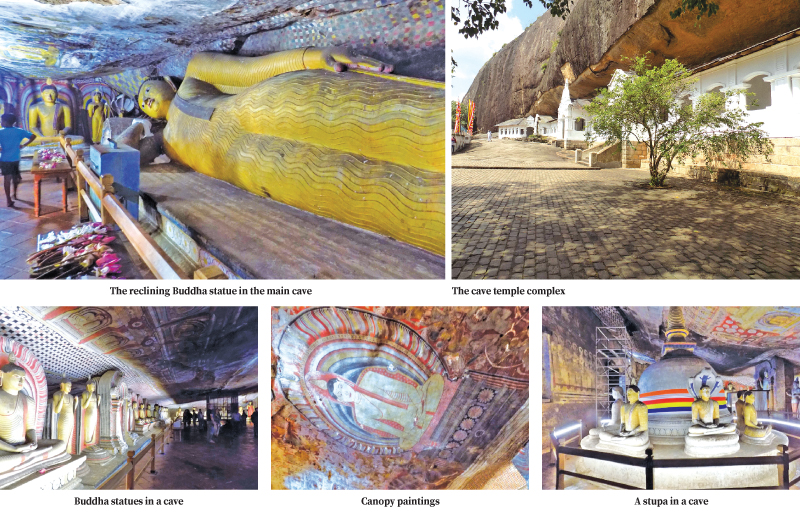Dambulla Cave Temple – Largest and best preserved ancient edifice in Sri Lanka – By by M.A.R.Manukulasooriya
Source : sundayobserver
The Dambulla Cave Temple also known as the Golden Temple of Dambulla is a world heritage site (1991) about 142 km North East of Colombo and 72 km North off Kandy.
Anyone who travels along the Kandy – Jaffna highway can view the picturesque scene of the Dambulla rock and the cave temple which are considered iconic landmarks which add prestige to the ancient city. It has stood there majestically for generations, depicting the Buddhist culture, values and the beauty of the Sri Lankan heritage. It remains the largest and the best preserved ancient edifice in Sri Lanka. The rock towers 160 metres over the surrounding plains. There are over 80 documented caves in the surrounding area.
The major attractions are spread over five caves with statues and paintings. These statues and paintings are on Gauthama Buddha and his life. These caves include 153 Buddha statues, three statues of Sri Lankan kings and four statues of Gods and Goddesses. The Buddha statues are in various reposes.
The murals cover an area of 2,100 square metres. The depictions on the walls of the caves include demon Mara and the Buddha’s first sermon. It is said that pre-historic Sri Lankans would have lived in these cave complexes before the arrival of Buddhism in Sri Lanka as there are burial sites with human skeletons about 2,700 years old at Ibbankatuwa near the Dambulla cave complex.
Dating back to the 1st century BC, this is the most impressive cave temple in Asia. Five caves are under a vast overhanging rock, carved with drip lines to keep the interiors dry. In 1938, the architecture was embellished with arched colonnades and gabled entrances. In the caves, the ceilings are painted with intricate patterns of religious images following the contours of the rock.
King Valagambahu is traditionally thought to have converted the caves into a temple in the 1st century BC. Many other kings made their contribution later on and by the 11th century, the caves became a major religious centre. King Nissankamalla of Polonnaruwa gilded the caves.






